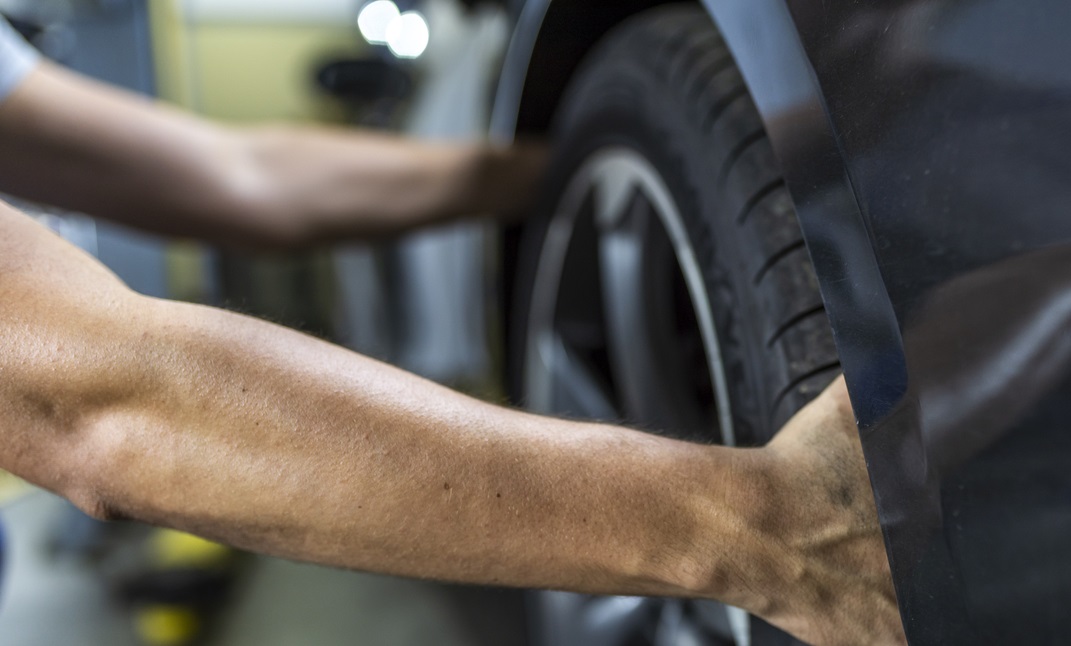How to tell when you need to replace your tyres
Published on: Sunday, 22 March 2020 | Author: Rebecca Taylor
Unsafe tyres mean an unsafe car, so it’s really important that you know when these crucial pieces of kit need to be replaced. But how can you tell if your tyres are no longer fit for purpose? After all, these components don’t come with a convenient ‘use by’ date that lets you know you when they expire. The fact is, the lifespan of your tyres will depend on a whole range of factors, including your mileage and driving style.
So that you know when it’s time to swap old for new, here are some tell-tale signs that you need to get new tyres.
They're over 10 years old
The condition of tyres is much more affected by how they’re treated and the conditions they are exposed to than how old they are. However, age is still an important factor. Experts recommend getting your tyres professionally checked over once they are five years old, and if your tyres have reached their tenth birthday from the date of manufacture, you’ll almost certainly need to get them replaced.
The tread is too worn
The tread on your tyres is essential for giving you traction on the road surface, helping you to keep control when cornering and allowing you to slow down or stop when necessary. When they’re new, tyres have a tread depth of at least 8mm, but over time this gradually wears down. If the tread becomes too worn, your risk of skids and collisions increases. Not only do worn tyres put you in greater danger on the roads, they can also land you a fine and penalty points on your licence. In fact, you could receive three points and a fine of £2,500 per tyre that fails to make the grade. To avoid these penalties, make sure you replace your tyres before the tread wears down below 1.6mm.
To really be on the safe side, it’s best to change your tyres once the tread gets down to around 3mm. Highlighting the importance of this, tests carried out by the Motor Industry Research Association revealed that in wet conditions, stopping distances can be 44 per cent greater for tyres with 1.6mm of tread compared to tyres with 3mm of tread.
As well as paying attention to the depth, look out for any holes in the tread. If you spot holes larger than 6mm, it’s advisable to get new tyres. This sort of damage tends to worsen over time, and it can affect your traction, grip and control.
You can see blisters, cracks or bulges in the sidewalls
Look out for any blisters, cracks or bulges in the sidewalls of your tyres. As tyres age and are exposed to sunlight and the general wear and tear of life on the road, the rubber starts to deteriorate. Sometimes, this results in splits and other imperfections in the walls. This can increase the risk of a blowout when you’re behind the wheel, which can be a frightening and dangerous experience, especially if you’re travelling at speed when it happens.
If you do spot any defects in the sidewalls, get your tyres looked at by an expert as soon as possible. You will probably need to get replacements.
You have to keep pumping them up
It’s usually pretty obvious if you have a standard tyre puncture, but slow punctures can be harder to detect. It’s important to pay attention to the warning signs that you may have this problem. Because of the effect they have on tyre pressure, these punctures can seriously affect the safety, comfort and performance of your car. If you find yourself having to regularly top up one or more of your tyres, there’s a good chance you have a slow puncture.
There are other indications that you might have this problem too. For example, if you relax your grip on the steering wheel and your car seems to pull to one side on a flat road, this can be a sign that the pressure is too low in at least one of your tyres. If you can feel more vibrations in your steering wheel than usual, this is another possible indication. You might also notice that your suspension seems harder than normal.
A number of things can cause a slow puncture, including a faulty tyre valve or a sharp object that has become embedded in the rubber.
How often should you check your tyres
It’s a good idea to check your tyres for possible faults on a regular basis. Ideally, you should inspect them around once a month, or before you set off on long journeys.
It’s also important to give them a thorough check before winter. Icy and wet conditions on the roads can make any problems with your tyres even more dangerous, so you should be especially vigilant when temperatures start to drop.
If you spot any potential issues with your tyres and you’re not sure if they need to be replaced, it’s always worth getting an expert opinion. A trained technician will be able to advise you on the best course of action.
Being in the know when it comes to tyre safety can help to make you a better, more confident and more responsible driver. From reducing the risk of skids and collisions to helping you avoid blowouts and punctures, it can play an important role in keeping you out of harm’s way when you’re in the driving seat.




